How to Back Up Your iPad to iCloud in 2025: A Complete Guide
If you have an iPad and haven’t backed it up, you run the risk of losing your data should the worst happen. However, if you want to learn how to back up iPad using iCloud or other methods, we’ve got you covered.
iPad users have many options available to back up precious data contained on their Apple handheld devices. The simplest and most straightforward option is to use iCloud. However, as you will see in our guide on how to backup iPads, there are a few options available, including choosing from one of the best online backup services.
iCloud may be the default way to back up your iPad, especially considering it comes already installed on your device. Additionally, once you create an Apple ID, you get 5GB of iCloud storage.
-
07/29/2024 Facts checked
We have rewritten our guide to how to back up your iPad to iCloud with new information and an easier-to-read format.
How to Backup iPad or iPhone to iCloud
There are a few ways to backup your iPhone, iPad and iPod to iCloud. You can take a set-it-and-forget-it approach by enabling automatic backups, or you can be more hands-on by manually backing up your Apple device. Either method works well, so let’s take a look at both manual and automatic iCloud backup processes.
Backup iPad Manually
Backing up your iPad to iCloud starts by navigating to the Settings app. Often it is located on the first page and looks like a set of gears. If you can’t easily find the Settings app, pull down on the screen to open the search bar and search for “settings.” To back up your iPad manually, follow the steps below.
- Open the Settings App
The first step is to open the Settings app. It’s the gear icon.
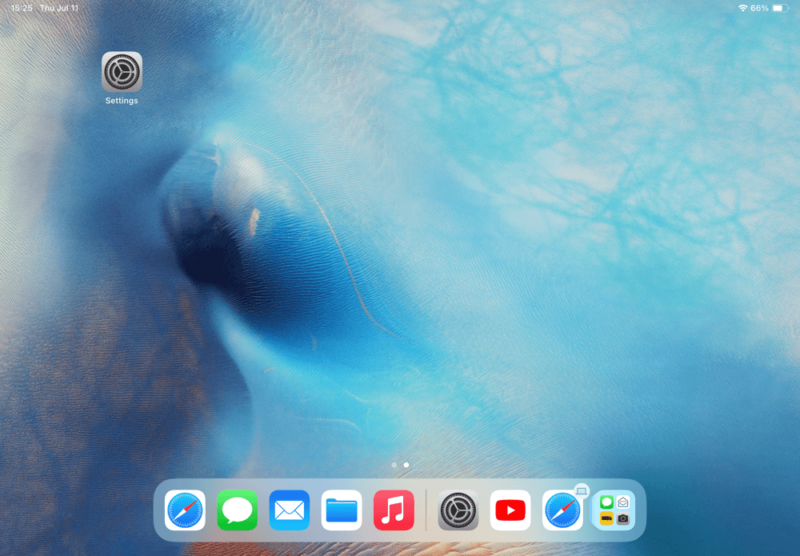
- Open Apple ID
To access iCloud, touch the panel in the upper left corner that contains your profile image and the text “Apple ID,” “iCloud,” “media” and “purchases.”
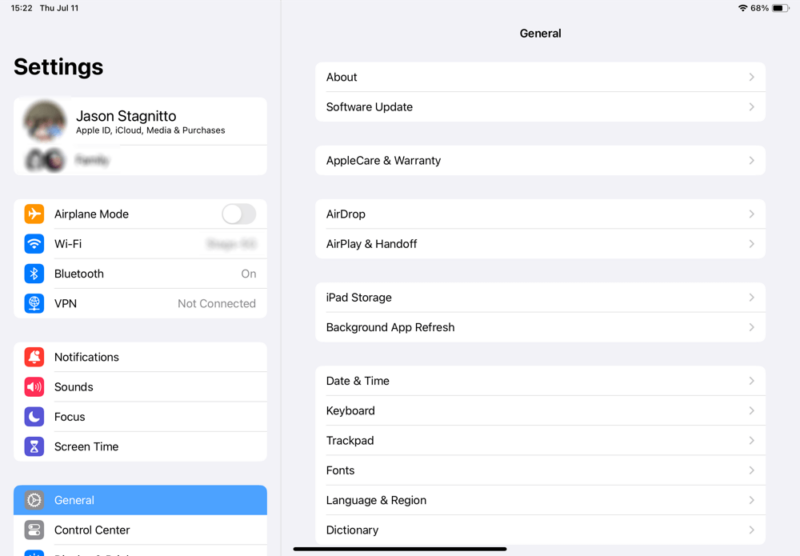
- Open iCloud
To open iCloud, locate it about halfway down the right side of the screen and touch the “iCloud” option.
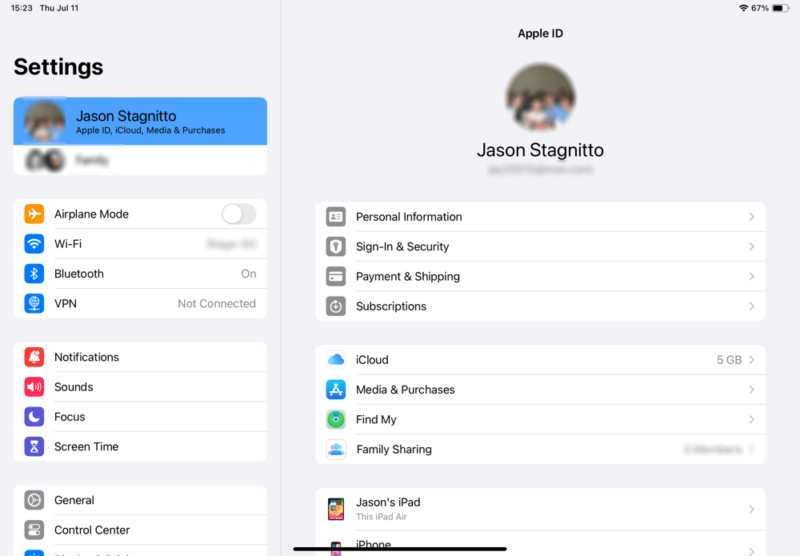
- Turn on iCloud Backup
To enable the backup, tap “iCloud Backup.” This will open the iCloud backup menu.
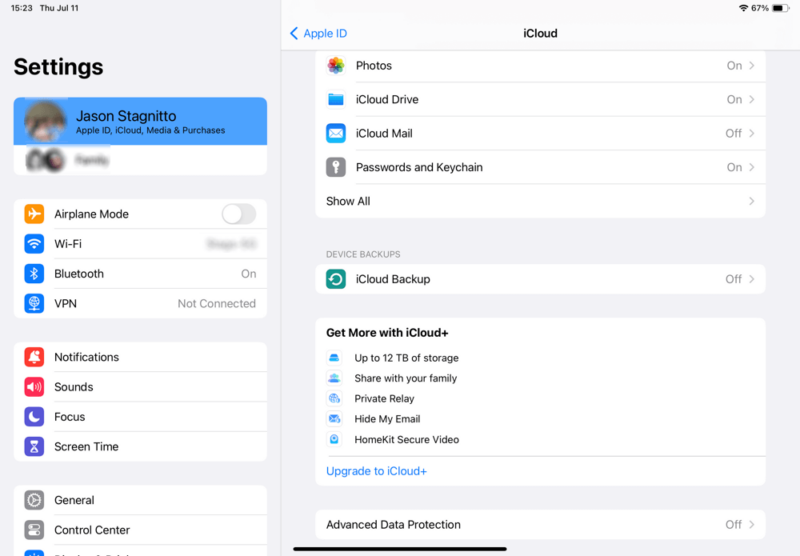
- Back Up Your iPad
Tapping the “back up now” option will start the manual backup process. You can click on “back up now” anytime you want to back up your iPad.
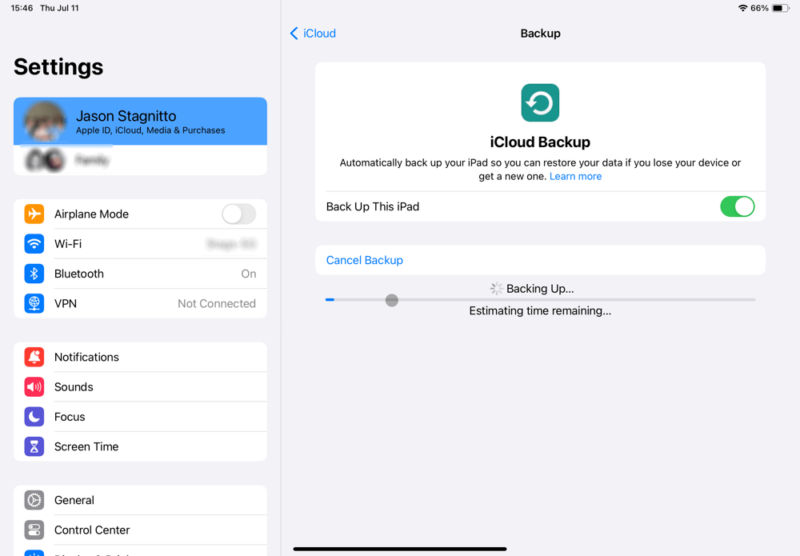
Backup iPad Automatically
Once you turn on iCloud Backup, iCloud will periodically back up your data without you needing to do anything else. Below, we show you how to enable automatic backups.
- Turn on iCloud Backup
Follow the steps above to access iCloud Backup and touch the toggle next to “backup this iPad” to enable backups.

- Back Up Now
After you touch the “back up now” link, you don’t need to do anything else, as iCloud backup will periodically back up your data as long as you have storage space.
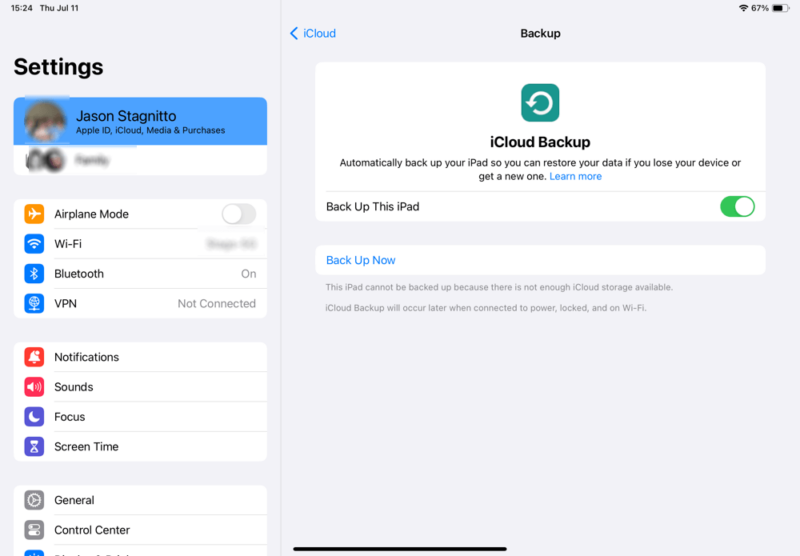
How to Restore iPad From Backup
In addition to creating backups, there are a few ways to restore your iPad from a backup you created in iCloud.
- When restoring fully, you will see an option to “restore from iCloud.” This will restore your iPad from the most recent iCloud backup available.
- When you connect your iPad to your computer, you will see an option to “restore backup” from the menu in Finder. Clicking the “restore backup” button will begin the restoration process.
- If you are using a PC, you can find the option to restore from the iTunes app after you connect your iPad to your computer.
Is It Better to Backup With iCloud or Mac?
Using iCloud to back up your iPad is not your only option. If you connect your iPad to your Mac, you will have the option to back up to your computer. There are pros and cons to using either method, as you will see in this quick comparison:
| iCloud Backup | Computer Backup (Mac, PC) |
|---|---|
| Stores data in the cloud (as long as you have enough iCloud storage space) | Stores data locally |
| Doesn’t take up hard disk space | Requires hard disk space, but it’s easy to pick a backup location |
| Can’t encrypt your backup | Uses your computer to encrypt local backup(s) |
Other Ways to Backup Your iPad
Even though an iPad comes with iCloud installed and you get 5GB of storage with an Apple ID, you are not limited to using only Apple’s iCloud backups or backing up your iPad to a computer. Below, we list different methods you can use to back up your iPad.
Final Thoughts
Backing up your iPad to iCloud is an effortless and seamless experience as long as you have enough storage space. Additionally, you are not locked in to only using iCloud. As an alternative, you can back up your iPad to a Mac or a PC using iTunes. No matter which method you choose, it’s important that you back up your iPad regularly, as you never know when disaster may strike.
Which method do you use to back up your iPad? Do you use a method other than iCloud? Is there another way to back up your iPad that we didn’t cover? Let us know in the comment section below. Thanks for reading our article.
FAQ: iPad Backup
The best way to back up your entire iPad is to use iCloud, as it captures not only your data but also your device settings. This works for any iOS device, so you can create an iPhone backup as well as backups for iPads and iPods.
On a PC, you can back up using iTunes. Alternatively, you can connect your iPad directly to your Mac and back it up to your computer.
If you use iCloud to back up your iPad, you will see the latest backup data stored in your iCloud account.
The option to backup your iPad using iCloud is located in the Settings app through your Apple ID.


